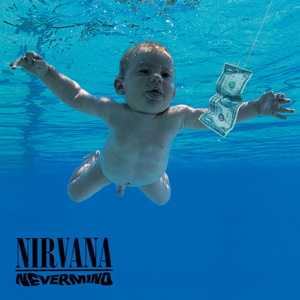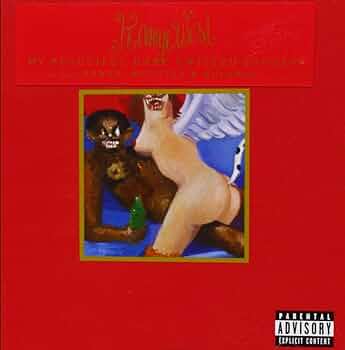Album art has always been more than just a cover; it’s a visual statement that accompanies the music, creating an immediate impact even before the first note is played. From provocative imagery to bold political statements, some album covers have not only captured attention but also stirred controversy, pushing the boundaries of societal norms and artistic expression. These controversial covers often sparked debates and, in many cases, led to increased sales due to the notoriety they gained. Let’s dive into some of the most controversial album covers of all time and explore the stories behind them.
The Origins of Controversial Album Art
The history of controversial album art is as old as the album cover itself. In the early days of recorded music, album covers were simple and often featured the artist’s photograph or a generic design. However, as music evolved, so did the importance of album art as a means of making a statement. The Beatles’ “Yesterday and Today” (1966) is a prime example of this evolution. The original cover, known as the “Butcher Cover,” featured the band dressed in white lab coats, surrounded by raw meat and dismembered baby dolls. The shocking imagery was intended as a satirical comment on the way their music was being “butchered” by the record company. However, the cover caused such an uproar that it was quickly withdrawn and replaced with a more conventional image, making the original copies highly sought after by collectors.
The Most Controversial Album Covers
The Rolling Stones – “Sticky Fingers” (1971)

One of the most iconic and controversial album covers of all time, “Sticky Fingers,” designed by Andy Warhol, featured a close-up shot of a man’s crotch in tight jeans, complete with a working zipper. The sexual innuendo was clear, and the cover was seen as provocative and explicit for its time. Some retailers even refused to stock the album. Despite—or perhaps because of—the controversy, “Sticky Fingers” went on to become one of the Rolling Stones’ best-selling albums.
Nirvana – “Nevermind” (1991)

Nirvana’s “Nevermind” features one of the most recognizable album covers in music history: a naked baby swimming underwater, reaching for a dollar bill on a fishhook. The image, shot by photographer Kirk Weddle, was meant to symbolize the evils of capitalism. However, it also sparked debates over child exploitation and nudity, leading some to call for the cover to be censored. Despite the controversy, the album was a massive success, solidifying Nirvana’s place in the pantheon of rock legends.
Guns N’ Roses – “Appetite for Destruction” (1987)

The original cover of “Appetite for Destruction” depicted a surreal, nightmarish scene of a robot raping a woman, with the band’s logo above it. The graphic and violent imagery caused an uproar, leading many retailers to refuse to stock the album. As a result, the cover was quickly replaced with a less provocative image. However, the controversy only added to the band’s rebellious image, and the album went on to become one of the best-selling rock albums of all time.
Cannibal Corpse – “Butchered at Birth” (1991)

Cannibal Corpse is known for their graphic and violent album covers, but “Butchered at Birth” took things to another level. The cover, which depicts mutilated infants being dismembered by zombies, was banned in several countries and heavily censored in others. The extreme imagery was seen as too offensive and disturbing, even for the death metal genre. Despite the controversy, or perhaps because of it, the album became a cult classic among metal fans.
Prince – “Lovesexy” (1988)

Prince was no stranger to controversy, and the cover of “Lovesexy” is a prime example of his willingness to push boundaries. The cover features Prince in the nude, posed in a stylized, almost ethereal manner. The image was seen as provocative and was banned by some retailers, who deemed it too explicit. Nevertheless, the album was a commercial success and is remembered as one of Prince’s most daring artistic statements.
Ice Cube – “Death Certificate” (1991)

Ice Cube’s “Death Certificate” cover features the rapper standing over a corpse draped in an American flag, a bold and provocative image that directly addressed the racial and political tensions of the time. The cover, along with the album’s content, was highly controversial and faced significant backlash from politicians and conservative groups. The controversy only fueled the album’s success, making it one of Ice Cube’s most influential works.
Kanye West – “My Beautiful Dark Twisted Fantasy” (2010)

Kanye West is no stranger to controversy, and the cover of “My Beautiful Dark Twisted Fantasy” is a testament to his provocative nature. The cover, designed by artist George Condo, features a surreal and explicit image of a nude Kanye being straddled by a winged, armless woman. The cover was banned in several stores, leading Kanye to release multiple alternative covers. The album, however, was widely acclaimed and is considered one of Kanye’s masterpieces.
The Impact of Controversy on Album Sales and Legacy
Controversy often translates into increased sales, as the public’s curiosity is piqued by the notoriety of an album cover. The media coverage surrounding these controversial covers often drives album sales, turning what might have been a niche release into a mainstream success. However, the impact goes beyond just sales; these covers often become part of the cultural conversation, influencing future generations of artists and solidifying the album’s place in history.
Censorship has also played a significant role in the legacy of these album covers. In some cases, the controversy led to the album being banned, censored, or altered, which in turn sparked debates about freedom of expression and artistic integrity. These discussions continue to resonate today, as the boundaries of what is considered acceptable in art and music are continually challenged.
The Modern Era of Album Art
In the digital age, the role of album art has evolved. With the rise of streaming services and digital downloads, album covers are often viewed as thumbnails on a screen rather than full-sized pieces of art. This shift has led some to believe that album covers are less impactful than they once were. However, artists continue to push boundaries, using album art as a way to make bold statements and provoke thought.
Controversial album covers still exist today, though they are often met with a different kind of scrutiny, particularly in the age of social media. Platforms like Instagram and Twitter can amplify the controversy, spreading it to a global audience in a matter of minutes. This has made artists more aware of the potential backlash, but it has also empowered them to use their platform to address important issues in a way that resonates with their audience.
Final Thoughts
Album art is more than just a visual representation of music; it’s a powerful form of expression that can provoke thought, challenge norms, and spark controversy. The most controversial album covers of all time are a testament to the enduring power of visual art in music, reminding us that sometimes, it’s the imagery as much as the music that leaves a lasting impact. As we continue to navigate the evolving landscape of music and art, it’s clear that the album cover will remain a vital and provocative form of expression.
